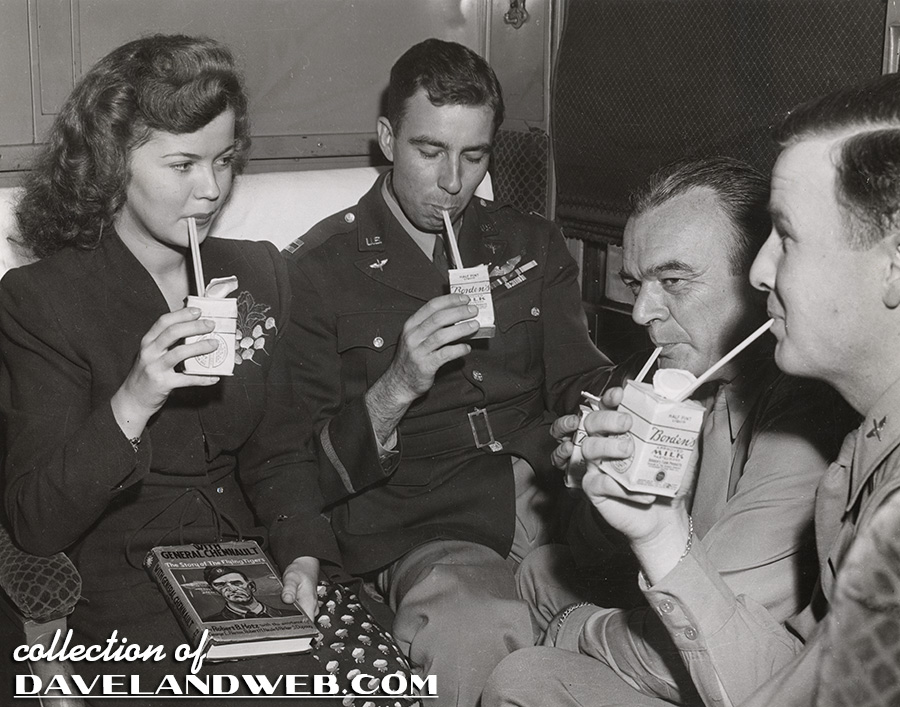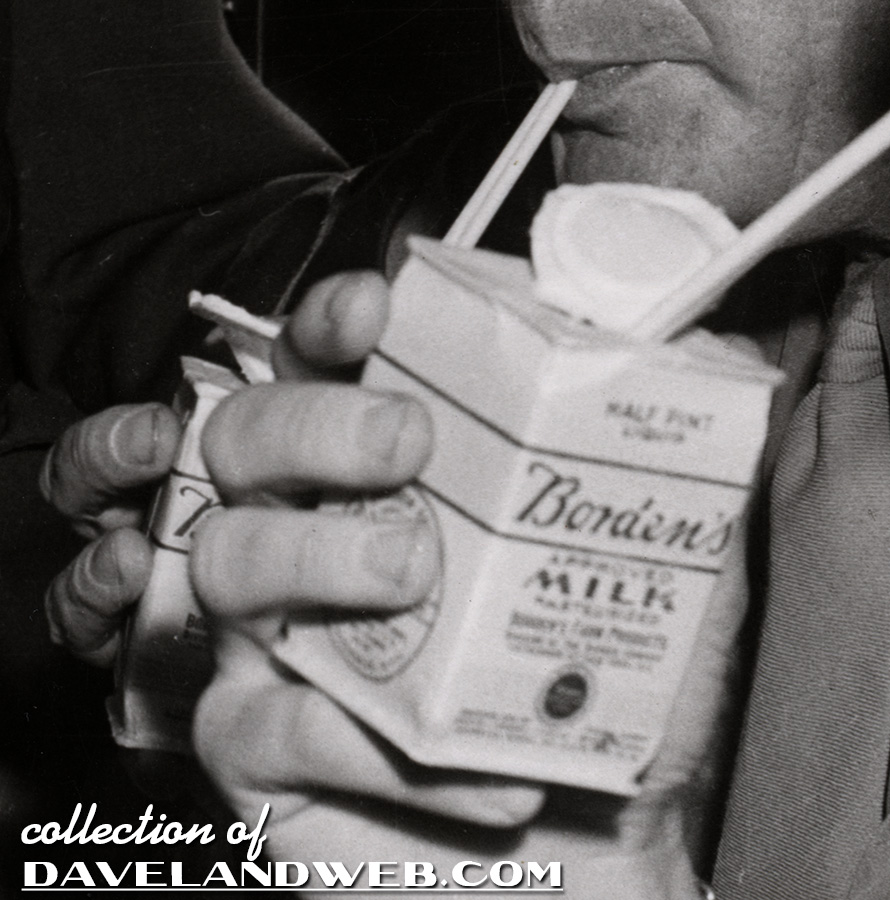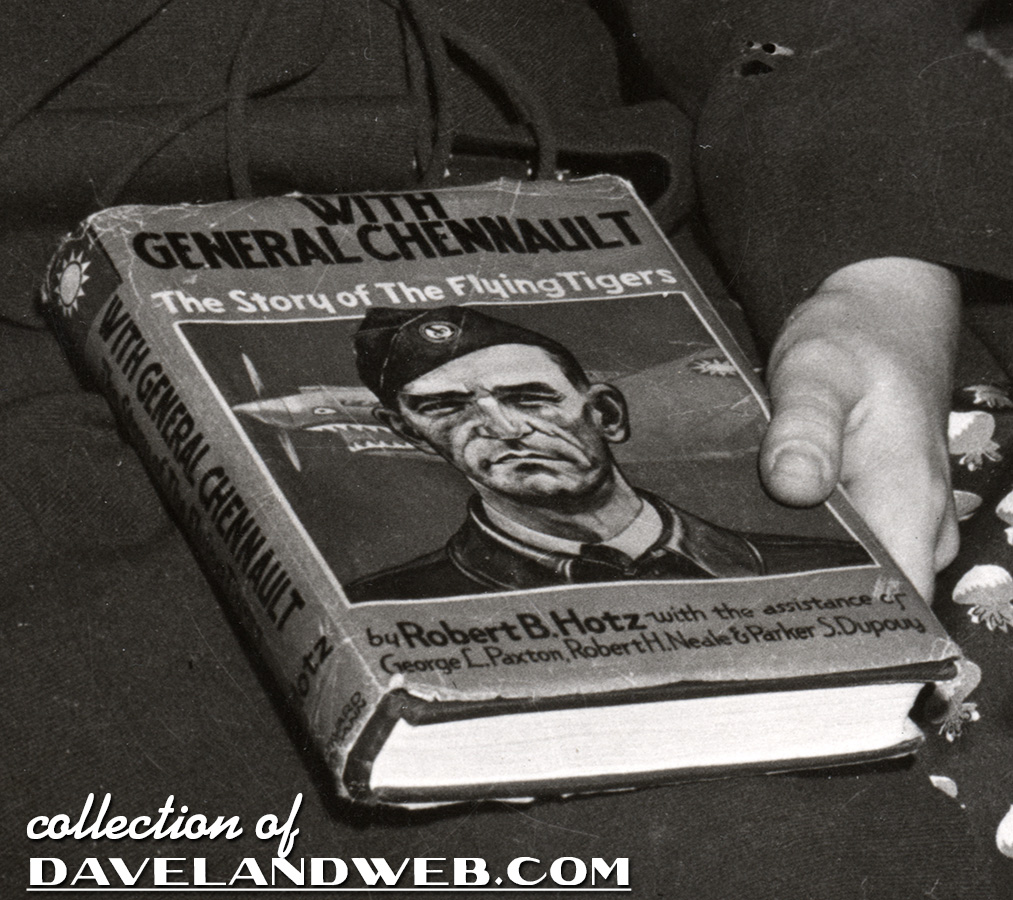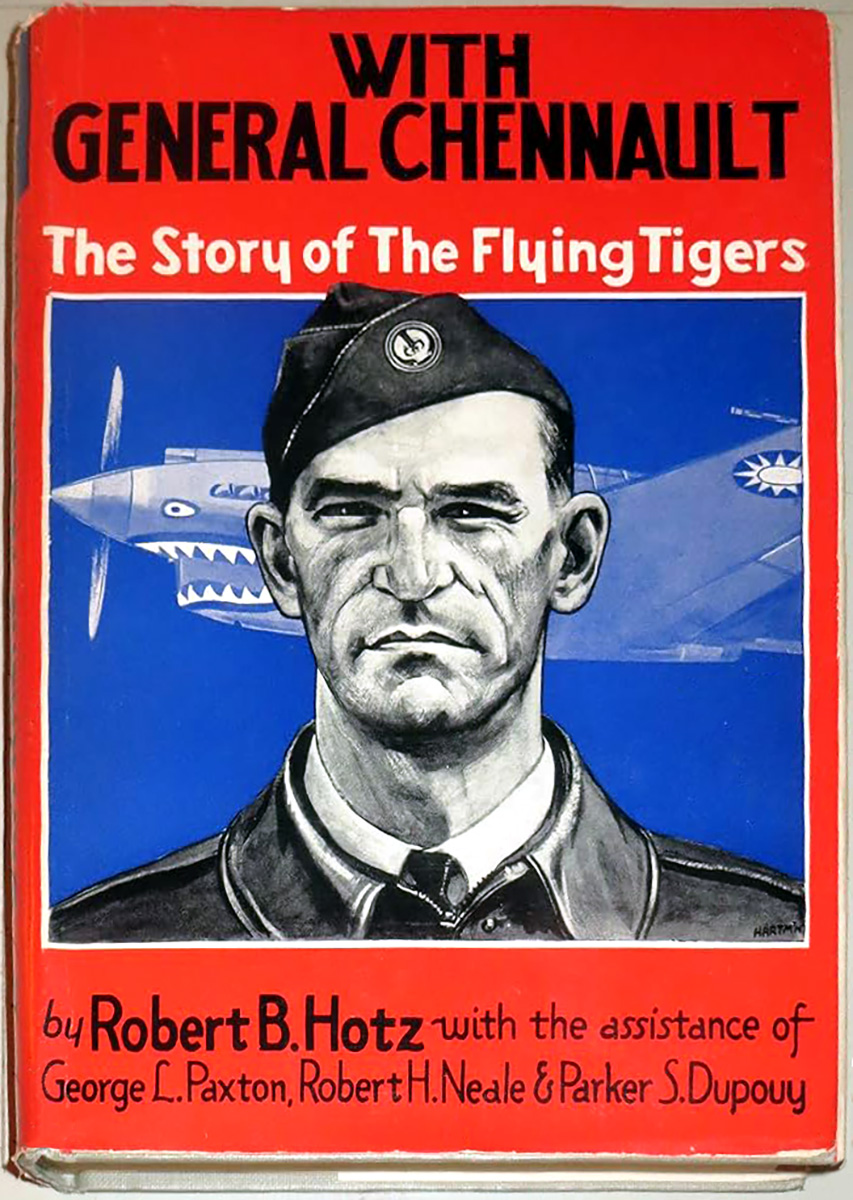
Shirley’s September 1944 trip to Dayton, Ohio, continues to provide fodder for my blog as “new” photos keep popping up. This one came with two vintage captions on the back:
Shirley’s father treated the crowd to milk while on the train. Sipping with the star are (left to right) Captain Leon Bogan, Major “Bing” Beyer, famous for his exploits in the China Burma theatre, and Captain John Harrison.
The second one was most likely written a year later when the photo was re-used in newspapers:
SHIRLEY TEMPLE VISITS OHIO
Everything Shirley Temple does is news. Last September, when the 16 year old Movie star and “sweetheart of America” married Sergeant John Agar, the reports about the wedding filled the pages of the press. Shirley is rich, famous, talented…but according to our photos she is also just a beautiful Teenage Bride, full of natural grace and charm, who tried her best to help the war effort by going on a Victory Bond Drive Tour through Ohio.
The first thing I wanted to zoom in on was the Borden’s Milk carton.

While I couldn’t find a matching color contemporary image, I did learn a bit about Borden from the Borden Dairy website:
The Borden brand name traces its roots back to Gail Borden, an entrepreneur and inventor who lived during the 1800s. Mr. Borden is best known for revolutionizing the dairy industry by developing the first successful commercial method of condensing milk. With Mr. Borden’s invention, dairy products could be preserved for long periods of time and could be shipped across hundreds of miles for the first time ever. On Aug. 19, 1856, Mr. Borden filed a patent for his process of condensing milk and soon began opening milk factories. After some initial financial difficulties, Mr. Borden founded the New York Condensed Milk Company with his partner, Jeremiah Milbank, and opened the first successful plant in Wassaic, NY in 1861. In 1885, the company pioneered the use of glass milk bottles. Borden Company expanded rapidly in the 1920s by acquiring two of the largest ice cream manufacturers in the U.S., by adding cheese to its product offerings and by acquiring a chemicals company. Between 1927 and 1930, Borden Company bought more than 200 companies around the U.S. and became the nation’s largest distributor of fluid milk. In 1936, Elsie the Cow was introduced as the Borden brand’s mascot. Elsie became an American icon, bringing Borden nationwide recognition through contests and campaigns featuring Elsie and her expanding family, including husband Elmer the bull. Elmer served as mascot for the company’s chemical division and the namesake of Elmer’s Glue. In 2000, Elsie was named one of the top 10 advertising icons of the 20th century by AdAge. By the early ‘90s, Borden’s net income fell, leading to several business units becoming divested. In 1995, Kohlberg Kravis Roberts (KKR) acquired Borden for $2 billion and took the company private after 68 years of public trading. In 2009, Grupo Lala purchased the dairy business, National Dairy LLC, and later established its U.S. operations under the name Borden Dairy, to once again acknowledge the lasting legacy that Mr. Borden left on the industry.
Who knew that glue and milk were connected by two married cows?!?

The second zoom was to see what book Shirley was holding in her hand. Edited from Google Books:
General Claire Lee Chennault (1890-1958) was both a pioneer and a genius when it came to the development of fighter tactics. He was a veteran pilot of the First World War who later became a member of a famous Army flying acrobatic team, and also served as the Army’s chief of fighter training. Because of a hearing problem, he retired from the Army Air Force in 1937. In early 1941, he recruited a group of American fliers to fly for the Chinese in their struggle with the invading Japanese. This group was officially known as the American Volunteer Group (the AVG), but soon became legendary as The Flying Tigers—a name given to them by the Chinese. Between the periods of 20 December 1941 and 4 July 1942, The Flying Tigers demonstrated innovative tactical victories when the news in the U.S. was filled with little more than stories of defeat at the hands of the Japanese forces, and, during the lowest period of the war for both the U.S. and the Allied Forces, gave hope to America that it might eventually defeat the Japanese.
Robert Bergmann Hotz (May 29, 1914 - February 9, 2006) was an award-winning aerospace journalist, author and arms-control expert who served on the presidential commission that investigated the space shuttle Challenger accident. His career as a journalist spanned more than 50 years, in which he pioneered news coverage of international military and aerospace affairs. He was commissioned as a captain in the U.S. Air Force in 1942, serving two tours with the 14th Air Force in China, in B-25 bomber combat operations and on the staff of Gen. Claire Lee Chennault. In the aftermath of the 1986 space shuttle Challenger accident, President Reagan appointed Hotz to the presidential commission that investigated NASA’s space shuttle program. Hotz was the author of four books, most notably With General Chennault: The Story of The Flying Tigers (1943). He also edited Gen. Chennault’s memoirs: Way of a Fighter (1946).

And so concludes another Temple Rabbit Hole!
See more teenage Shirley Temple photos at my main website.

No comments:
Post a Comment